More information on “Reaching Long Distance”.
Click here to go back to Gallery 2.
More information on “Reaching Long Distance”.
Click here to go back to Gallery 2.

By November 1876, just eight months after the original call, connections could be made sixteen miles apart. Shortly after, there was a successful call at 100 miles distance. This map shows the connections that were possible in 1892, plus the centers in which calls were connected.
Image Courtesy of AT&T Archives and History Center.
American Telephone and Telegraph Co.
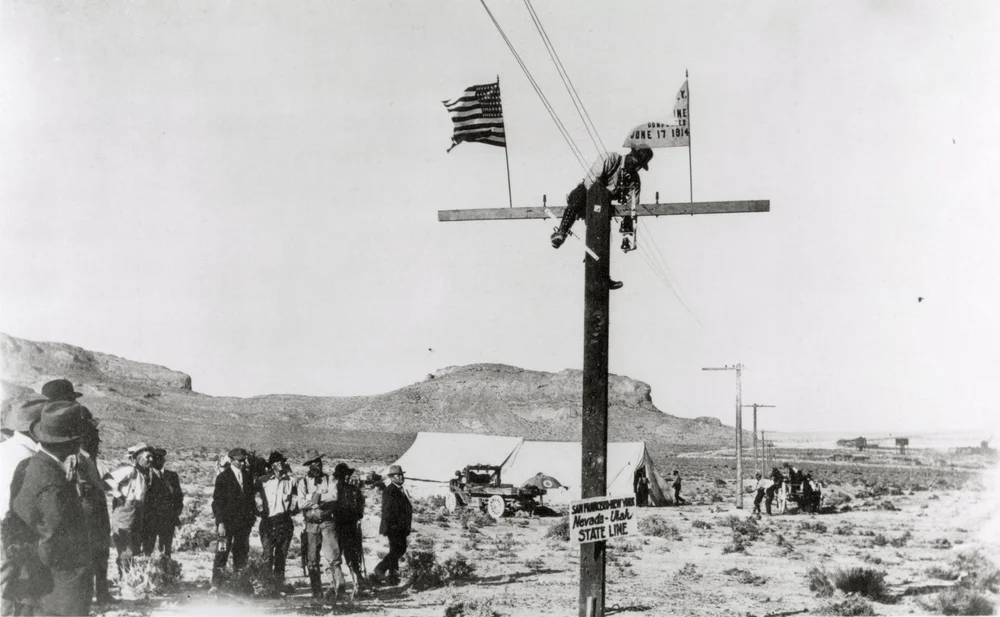
East met West when the two existing lines were finally connected. The telephone poles that carried the cables had to withstand the gamut of North American climates, including the desert.
Image Courtesy of AT&T Archives and History Center.
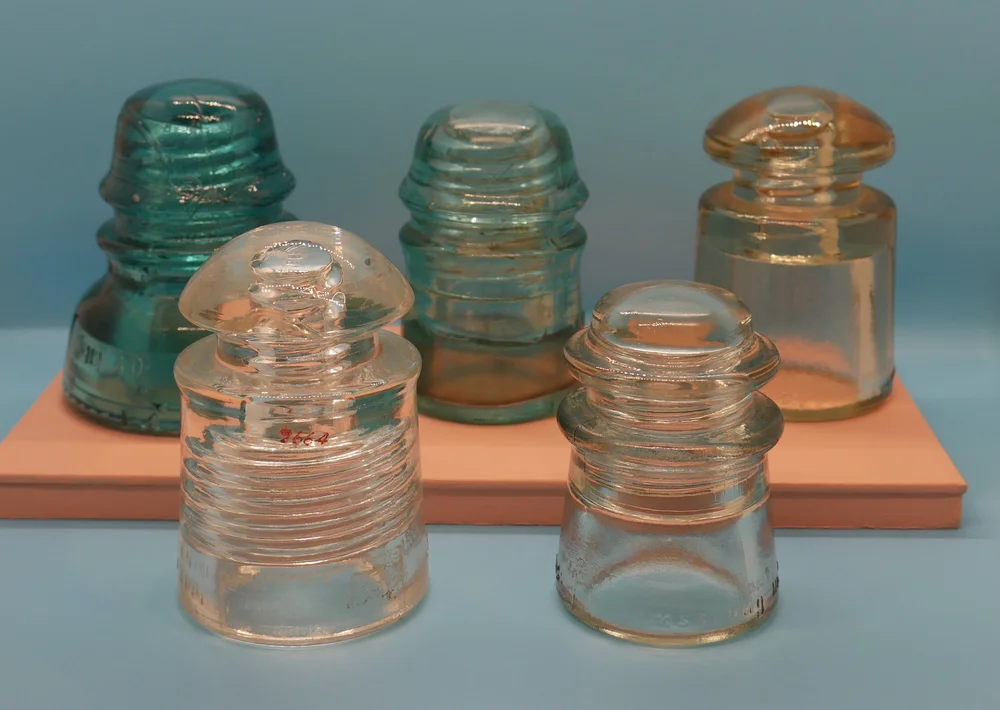
Glass insulators were placed on crossarms to ensure that electrical currents were not transferred to the pole, which kept the signal strong and protected the pole from fire. You can still see glass insulators on some telephone poles today. Armstrong insulators were made in New Jersey.
Collection of AT&T Archives and History Center.
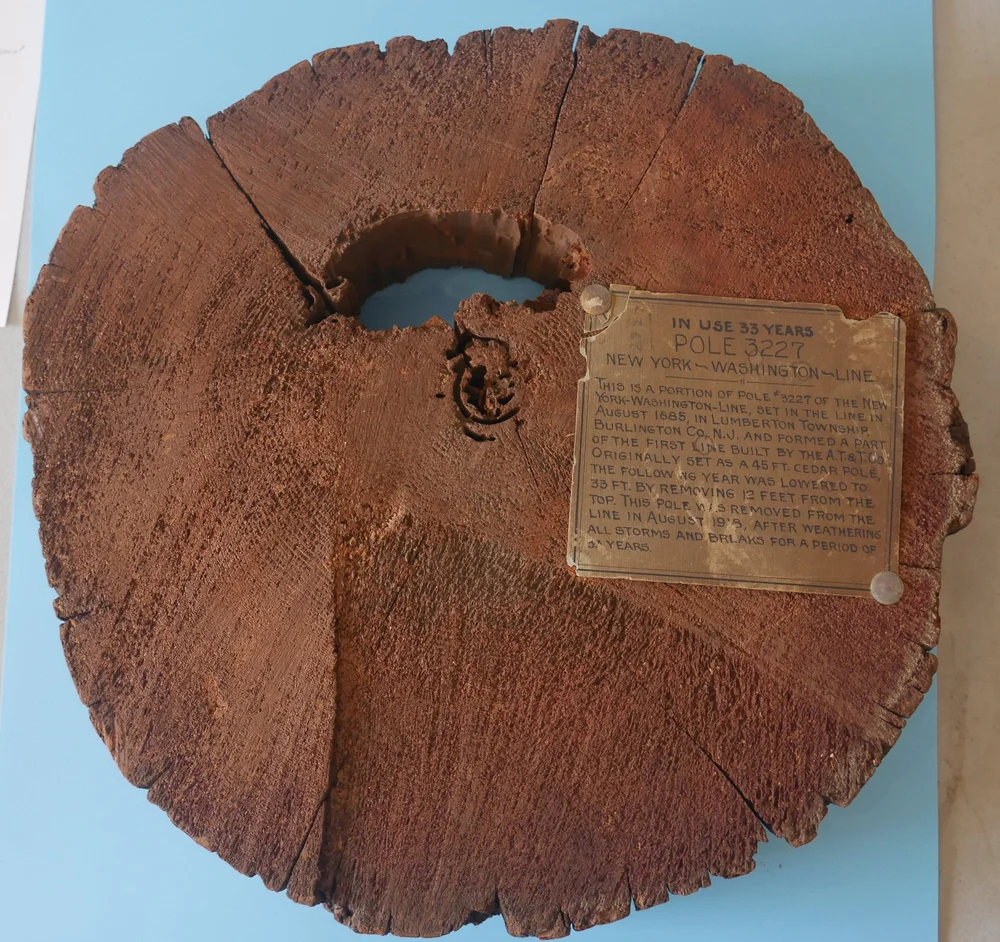
As is noted in the attached label, this pole was installed as part of the New York – Washington, D.C. line in 1885. It stood in Lumberton Township, NJ for 33 years “weathering all storms and breaks.”
Collection of AT&T Archives and History Center.
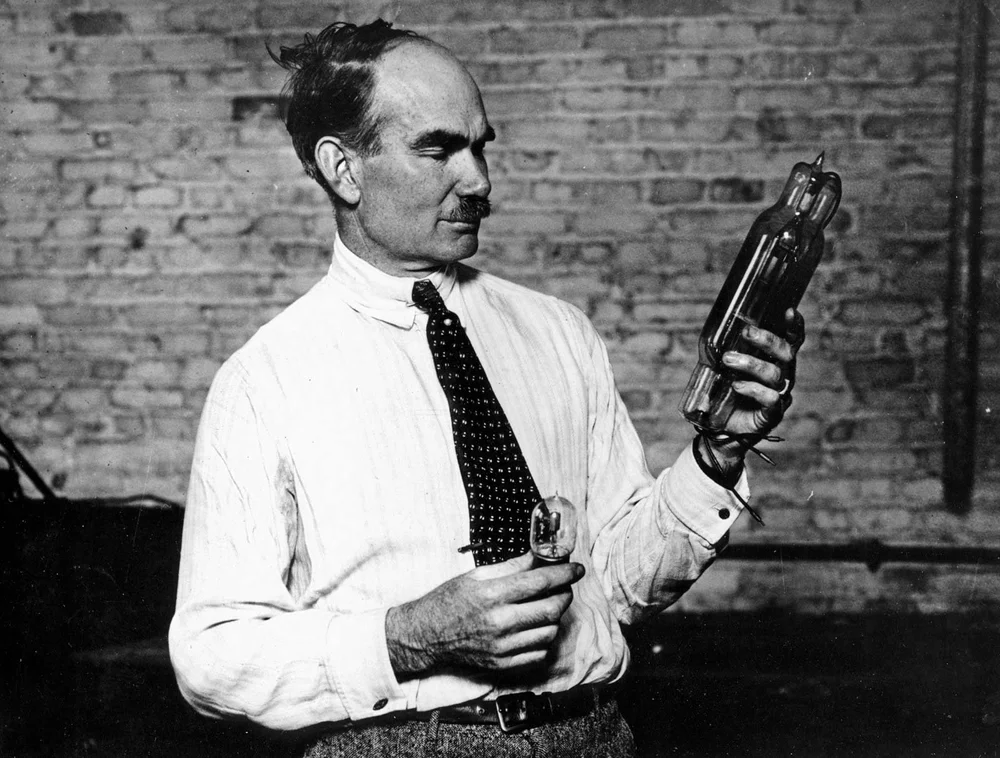
In 1907 Lee De Forest patented the audion, a device to boost electrical current. In 1912 the invention was brought to the attention of Bell executives who saw the potential for applications in telephony. Harold Arnold, a Bell engineer living in New Jersey, was assigned to work on the audion. He predicted that eliminating gas from the device would increase its power. Using a pump, Arnold was able to create a high-vacuum system. Within five months of his innovation, tubes were being tested on the New York to Baltimore line, in October 1913.
Image Courtesy of Encyclopedia Britannica, Inc. ©

These triode (see the next two pictures), or Three Element Vacuum tubes, strengthen electrical signals. AT&T used them in repeaters, in order to amplify sound over telephone calls, making them the final puzzle piece in transcontinental communication. By 1927, repeaters could quintuple the effectiveness of each pair of wires.
The VT2 model, seen here, is similar to what would have been used on the transcontinental line. The variety of sizes and shapes grew as the use of vacuum tubes was expanded to microphones, public address systems, electric sound recording, portable devices, and sound motion pictures. Learn more about their use in radio in the next gallery.
Collection of AT&T Archives and History Center.
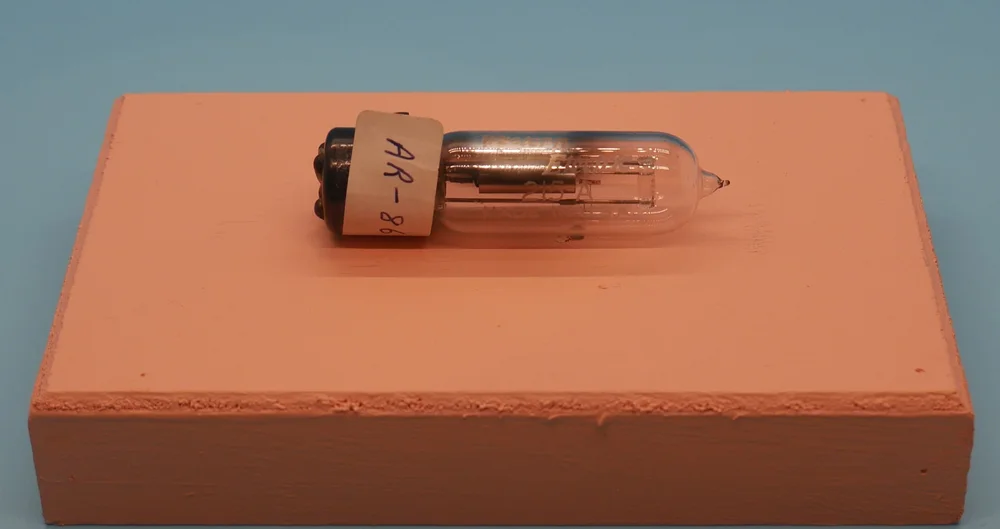
These triode (see the photos before and after this one), or Three Element Vacuum tubes, strengthen electrical signals. AT&T used them in repeaters, in order to amplify sound over telephone calls, making them the final puzzle piece in transcontinental communication. By 1927, repeaters could quintuple the effectiveness of each pair of wires.
Collection of AT&T Archives and History Center.
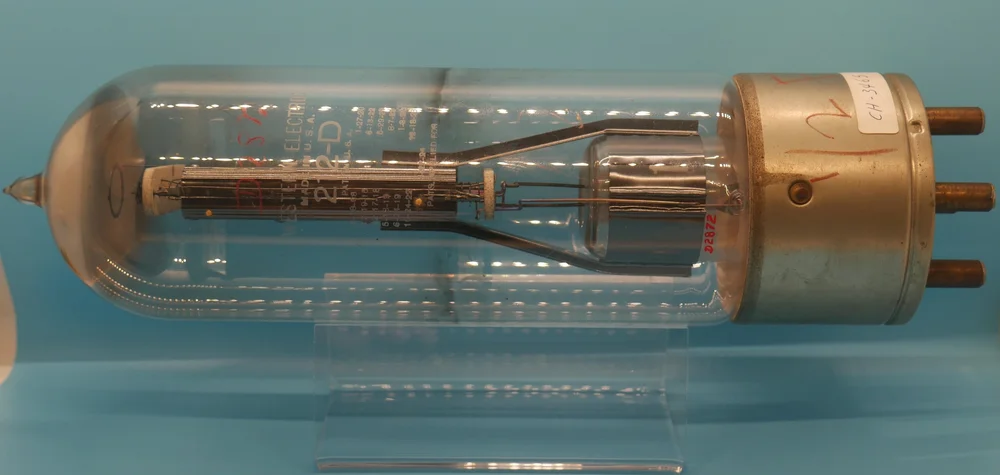
These triode (see the previous two photos), or Three Element Vacuum tubes, strengthen electrical signals. AT&T used them in repeaters, in order to amplify sound over telephone calls, making them the final puzzle piece in transcontinental communication. By 1927, repeaters could quintuple the effectiveness of each pair of wires.
Collection of AT&T Archives and History Center.
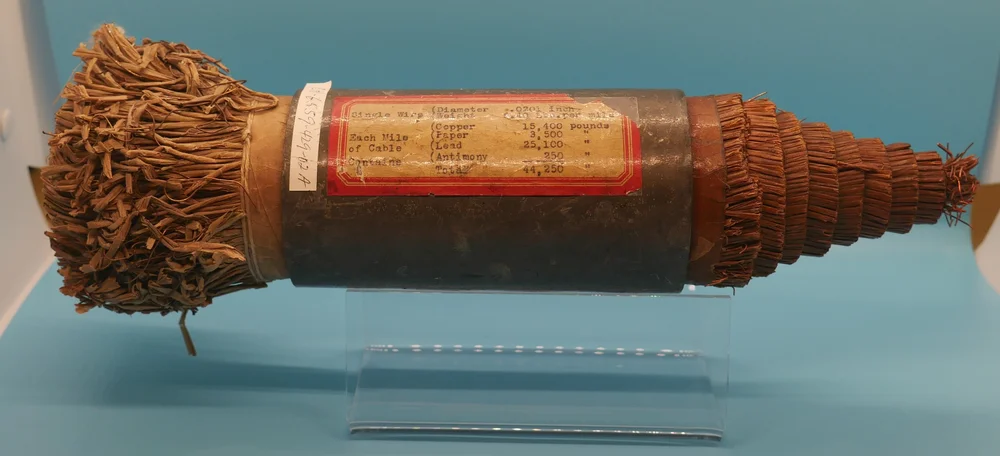
Exchange cables were strung between telephone poles. A single copper wire would run from the telephone in a subscriber’s home to a nearby telephone pole where it would join a large cable containing the wires of surrounding subscribers. Visible in the cross section of this example, the copper wires would be bound together, insulated in paper, then housed in a sheath of lead and antimony alloy.
Local exchange cables like this one were made at the Western Electric Plant in Kearny, NJ.
Collection of AT&T Archives and History Center.
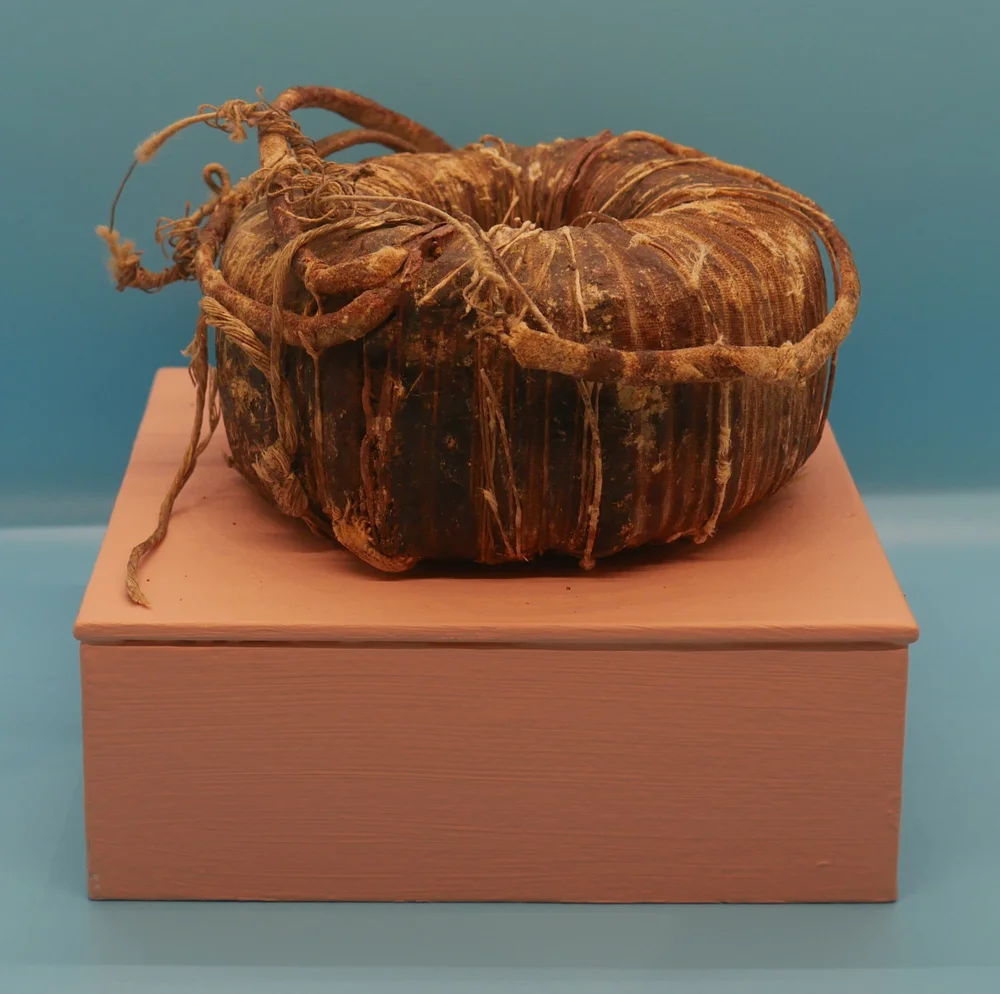
The sound of the human voice was carried via electrical waves and diminished as it passed through miles of wire and various switchboards. Loading coils, installed on the wires at eight mile intervals, helped to reduce distortion.
Collection of AT&T Archives and History Center.
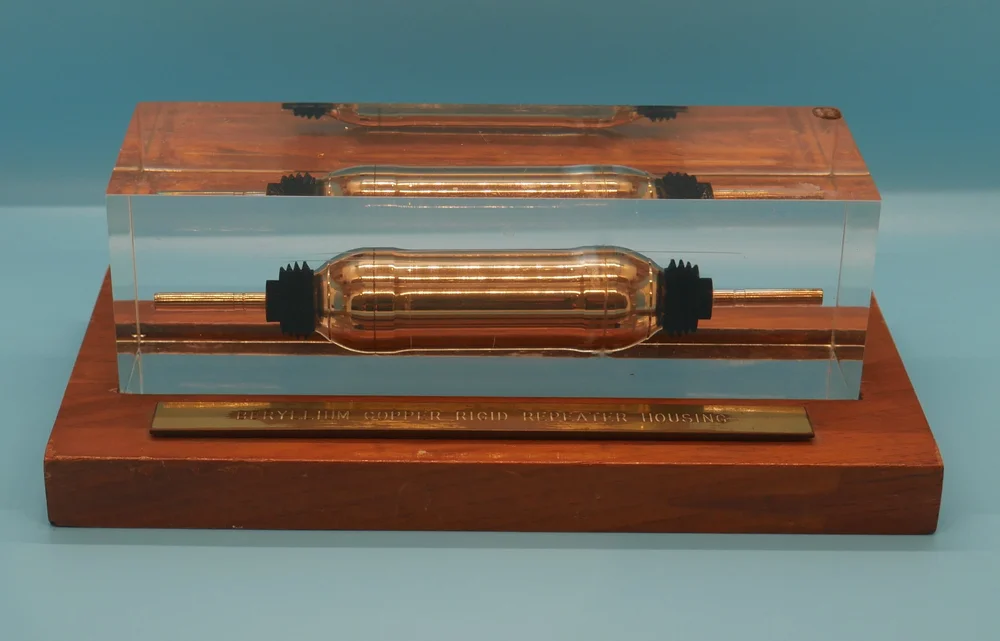
Full-size SF repeaters were about three feet long, and were the first in the transatlantic cable series to have vacuum tubes replaced by the more modern transistor. The capsule-like shape allowed for it to slide smoothly inside the protection of a submarine cable. One was placed on the ocean floor every 11 ½ miles. A Western Electric plant in Hillside, NJ was a chief manufacturer for undersea repeaters.
Collection of AT&T Archives and History Center.